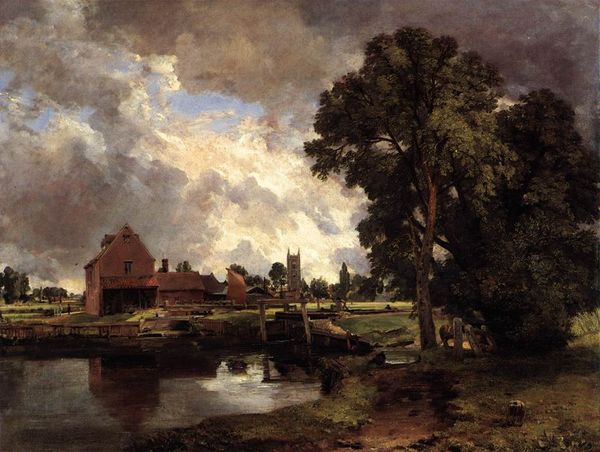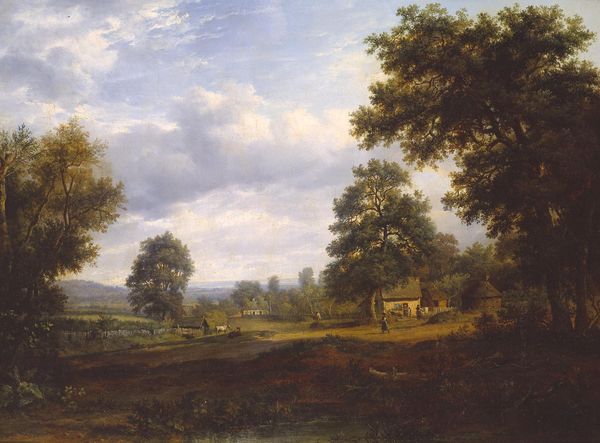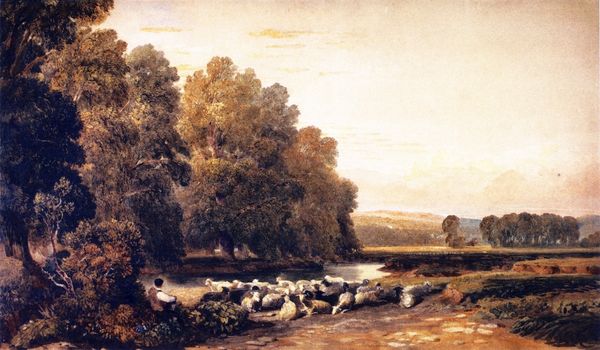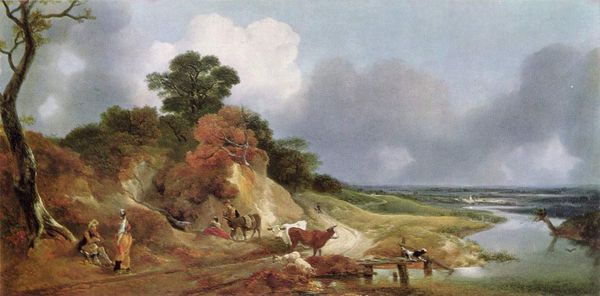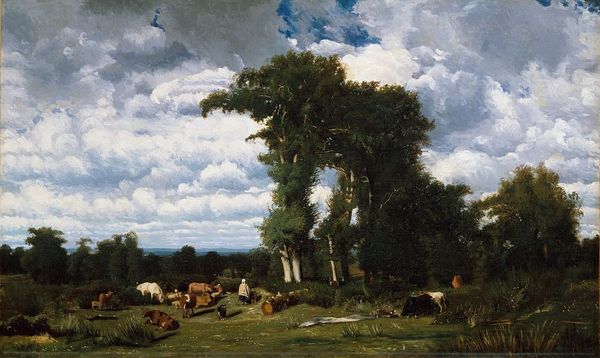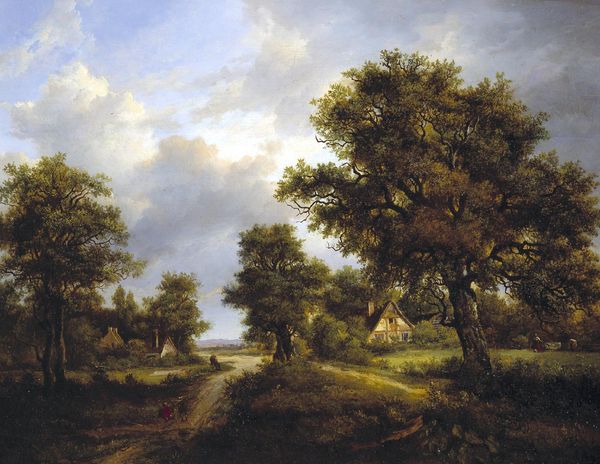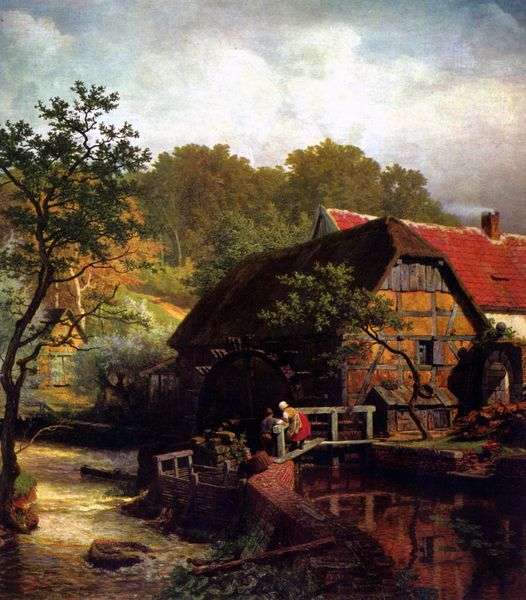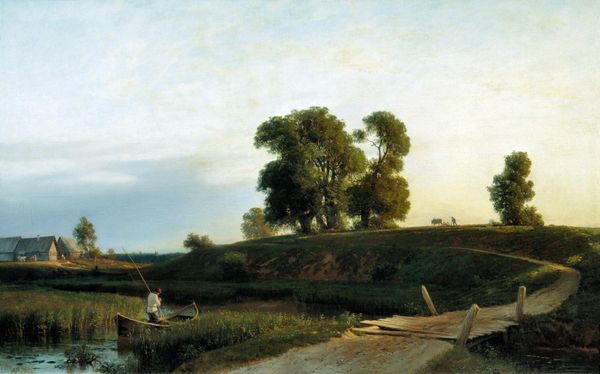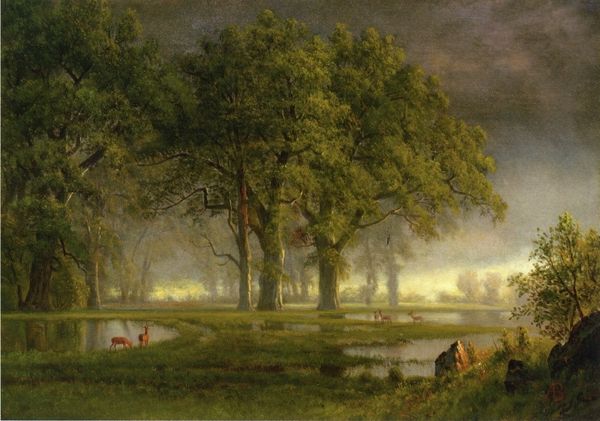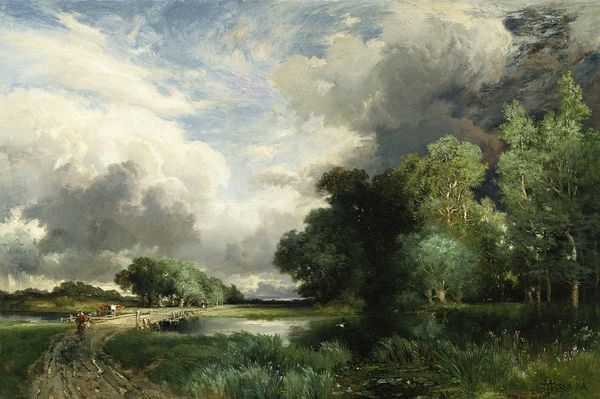
Dimensions: 66.04 x 86.36 cm
Copyright: Public domain
Curator: Welcome! Today, we are looking at Albert Bierstadt’s "Westphalian Landscape," painted in 1855. Editor: It's quite dramatic, isn't it? The looming storm clouds create an atmosphere of tension. Despite the idyllic scene below, there’s this sense of impending disruption, as if change is inevitable. Curator: Absolutely. Bierstadt was working in a period where the rural was often idealized, but he brings a level of realism and a kind of nuanced portrayal to the image. The detailed depiction of everyday life within the shadow of an approaching storm suggests something about the human relationship to nature's power, perhaps hinting at something beyond simple romanticization. What do you see there? Editor: The solitary figure crossing the bridge, weighed down by what she's carrying. It’s an echo of labor, both in what we know it historically implies and in the image itself, especially when placed in contrast with that more idealized romantic vision of the natural world that was really blooming then, alongside political theories of national destiny. The painting pushes us to think about that labor in context, too, doesn't it? Curator: That's right. The art market during the mid-19th century was being shaped not only by the academies but also by an emerging bourgeoisie, hungry for images of both aspiration and a kind of nostalgic "authenticity." The composition of the painting is strategic as it meets the demand, allowing an invitation into the serene countryside, but the ominous sky acts as a sort of memento mori of disruption to these values. Editor: It’s not merely a picturesque scene but one imbued with a feeling of contingency. In a social reading, the approaching storm might symbolize societal challenges, like rapid urbanization, weighing heavily on rural populations, especially on those working on the margins and often unseen, right? Curator: I concur. Viewing it through an intersectional lens, we might explore questions of class and gender roles within that rural context, or more broadly consider its contemporary resonance in terms of environmental change and resilience of those communities most impacted. Editor: Exactly. The drama of light and shadow emphasizes both the beauty and the possible hardship. That combination gives it a resonance far beyond a simple pastoral scene. Thank you, this has given me so much to consider! Curator: And for me as well. A lovely conversation.
Comments
No comments
Be the first to comment and join the conversation on the ultimate creative platform.

